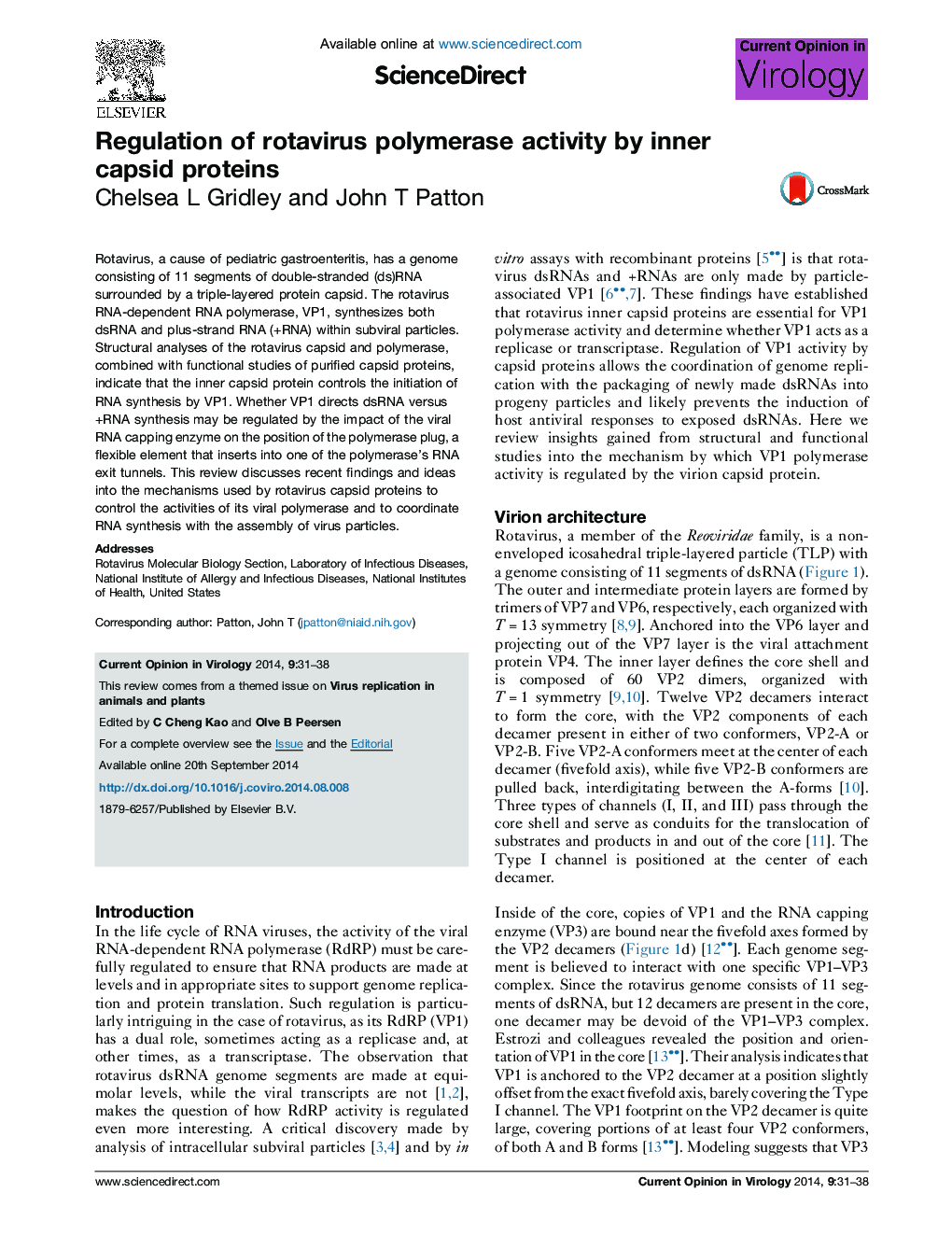| Article ID | Journal | Published Year | Pages | File Type |
|---|---|---|---|---|
| 2473323 | Current Opinion in Virology | 2014 | 8 Pages |
•Rotavirus RNA polymerase activity is strictly particle associated.•Rotavirus replicase activity requires the core shell protein VP2.•VP2 may induce conformational changes in the polymerase priming loop.•Transcriptase activity requires VP2 and VP6 capsid shell proteins.•C-terminal plug of VP1 may regulate replicase versus transcriptase activity.
Rotavirus, a cause of pediatric gastroenteritis, has a genome consisting of 11 segments of double-stranded (ds)RNA surrounded by a triple-layered protein capsid. The rotavirus RNA-dependent RNA polymerase, VP1, synthesizes both dsRNA and plus-strand RNA (+RNA) within subviral particles. Structural analyses of the rotavirus capsid and polymerase, combined with functional studies of purified capsid proteins, indicate that the inner capsid protein controls the initiation of RNA synthesis by VP1. Whether VP1 directs dsRNA versus +RNA synthesis may be regulated by the impact of the viral RNA capping enzyme on the position of the polymerase plug, a flexible element that inserts into one of the polymerase's RNA exit tunnels. This review discusses recent findings and ideas into the mechanisms used by rotavirus capsid proteins to control the activities of its viral polymerase and to coordinate RNA synthesis with the assembly of virus particles.
